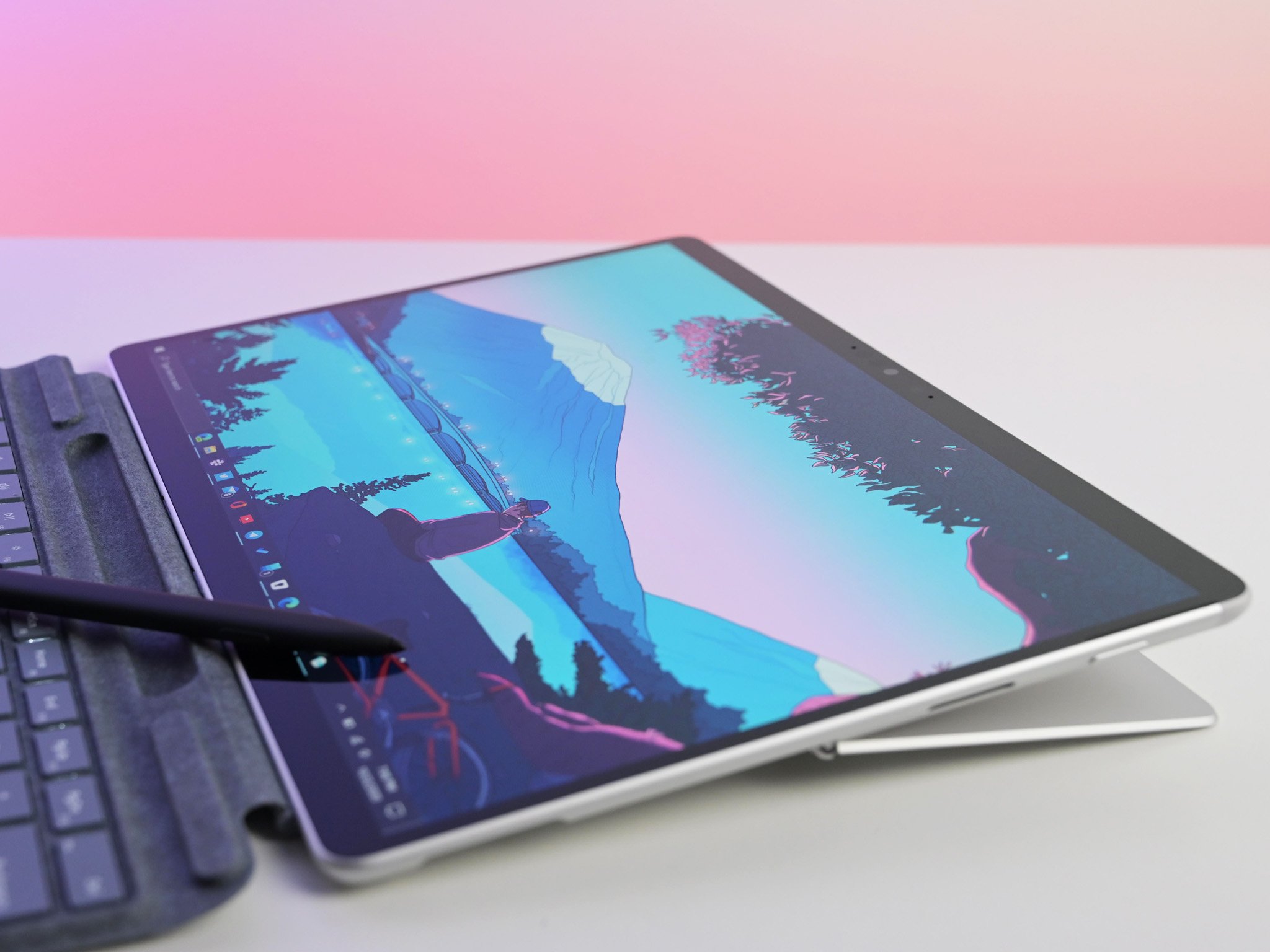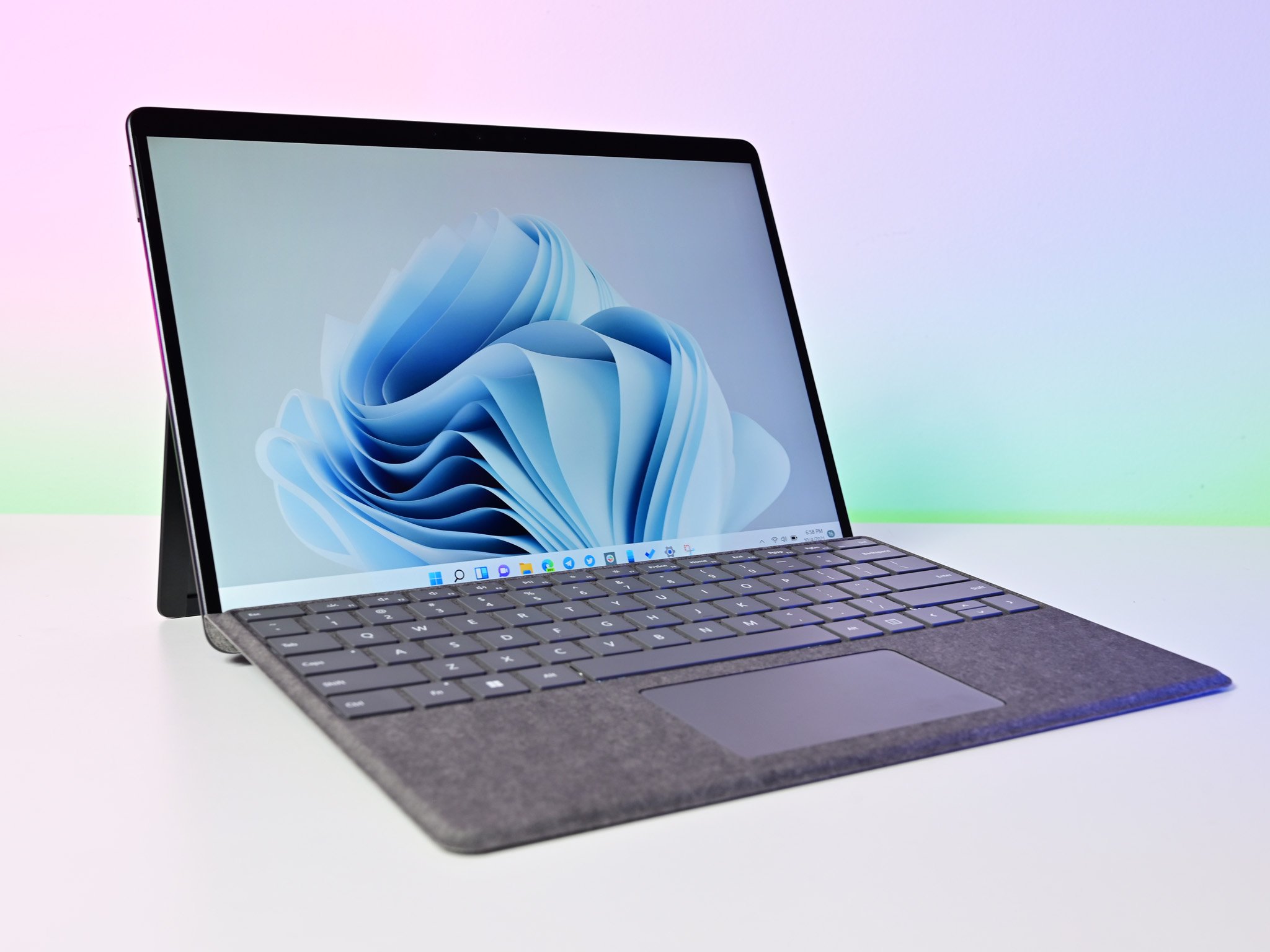 Source: Daniel Rubino / Windows Central
Source: Daniel Rubino / Windows Central
Microsoft’s Surface Pro X will turn three years old this fall. When it was announced, CVP Panos Panay described it as the next evolution in the 2-in-1 form factor, featuring a new design, larger screen, thinner chassis and an ARM SoC that powers everything under the hood. It was launched alongside the Surface Pro 7, which at the time had been rocking the same design for about five years.
It was a breath of fresh air for the Surface Pro line, but the Surface Pro X was an entirely different product. It was less powerful than the Surface Pro 7 but had built-in LTE and better battery life. It had application compatibility issues due to the ARM architecture and would not work with previous Surface Pro accessories such as the current Type Cover. But it was thinner, lighter and more portable than its old brother.
Everything about the Surface Pro X was new, and with its launch alongside the older-looking Surface Pro 7, the new moniker made sense. Yes, both were Surface Pro devices, but they were different in many ways. Now, fast forward to 2022, when there’s a Surface Pro 8 alongside the Surface Pro X, and that distinction is much less clear.
The Surface Pro 8 launched last year and was the first “major” Surface Pro to adopt the look and design language of the Surface Pro X. It has the same 13-inch screen, built-in LTE, similar battery life, and is compatible with the same accessories. On the Surface Pro X side, app compatibility is no longer an issue thanks to developments in Windows 11 on ARM, further blurring the line between these devices.
These two products are now remarkably similar in so many ways that branding them differently doesn’t make much sense. Sure, the Surface Pro X is still a different build, but that doesn’t matter anymore because the Surface Pro X can run all the same apps that the Surface Pro 8 can, only with lower performance in scenarios that require emulation.
collect them together
 Source: Daniel Rubino / Windows Central
Source: Daniel Rubino / Windows Central
With the differences between the Surface Pro X and the ultra-thin Surface Pro 8, I think it’s time for Microsoft to integrate its product lines under the Surface Pro 9 branding later this year. Microsoft can fit SKUs into ARM as entry-level models while retaining Intel Core i5 and Intel Core i7 models for high-end SKUs and enterprise customers.
If we take a look at Microsoft’s pricing structure for the Surface Pro X and Surface Pro 8, then Microsoft is Previously did this. The Surface Pro X is billed as the entry-level Surface Pro at $899, compared to a starting price of $1,199 for the Surface Pro 8 with Intel Core i5. Why not formalize this by recalling both the Surface Pro 9 later this year?
Here’s my default pricing structure to show how the ARM and Intel models can co-exist:
| Healer | RAM | storage | price |
|---|---|---|---|
| Microsoft SQ3 (without LTE) | 8 GB | 128 GB | $999 |
| Intel Core i5 | 8 GB | 256GB | $1199 |
| Microsoft SQ3 (with LTE) | 16 GB | 256GB | $1,299 |
| Intel Core i5 | 16 GB | 256GB | $1399 |
| Intel Core i7 | 16 GB | 256GB | $1,599 |
… And so on.
It would make sense from a performance perspective as well. The Snapdragon 8cx Gen3 meant to power the Surface Pro X this fall is expected to rival the 11th-generation Intel Core i5 or i7, but the Surface Pro 9 will ship with the 12th-generation Intel Core i5 or i7 chipset. Much more powerful than 11th generation Intel chips.
Plus, it’s not like Microsoft hasn’t done anything similar before. If we look at the Surface Laptop 3 and Surface Laptop 4, these devices can be equipped with Intel or AMD chipsets, each of which offers different performance, battery advantages and disadvantages. So, there is precedent for this, and I don’t see why Microsoft couldn’t do it as well with the Surface Pro 9 with Intel and ARM.
Now, it is true that the Surface Pro X is not identical For the Surface Pro 8. The Pro X is thinner and lighter, but is that enough to warrant a different brand of each? I do not think so. Additionally, Microsoft could use this as an opportunity to integrate the Pro X and Pro 9 chassis, put the ARM SoC into designing the thicker Surface Pro 9 and discard the thinner Surface Pro X chassis.
Want to discard the Surface Pro X chassis?
 Source: Daniel Rubino / Windows Central
Source: Daniel Rubino / Windows Central
Listen to me – doing this will allow Microsoft to improve the ARM model in one of two ways. It could house a much larger battery, which would enable the Surface Pro 9 with ARM to be the first Surface device with true all-day battery life. Or an alternative is that it will make room for the fan, which could enable Microsoft to overclock the SoC and squeeze more performance.
Either option is a win for Surface Pro X fans, but it would come at the expense of the slim Pro X chassis we have today. Even if Microsoft keeps the thinner chassis found on the ARM model, I think the differences between the Pro X and Pro 9 are too small to tell by the name. It just doesn’t make sense.
I think doing this would also do a lot for “normalizing” ARM in the Windows space. Until now, Windows on ARM devices was always marketed as a special premium case, but it shouldn’t be. If Microsoft wants people to forget about architecture and normalize ARM, it needs to start treating ARM products like any other Windows PC. Stop giving them special names and unique designs and treat them like all the other computers out there.
Finally, merging the Pro X and Pro 9 under one moniker will free up the “Pro X” branding for another Surface Pro in the future. When Microsoft is once again ready to push the boat out in design or form factor, it can bring back the Pro X branding for this device. With foldable computers on the horizon, I think the ‘Pro X’ moniker will be a perfect fit for a foldable Surface tablet, if or when it arrives.

Comments
Post a Comment